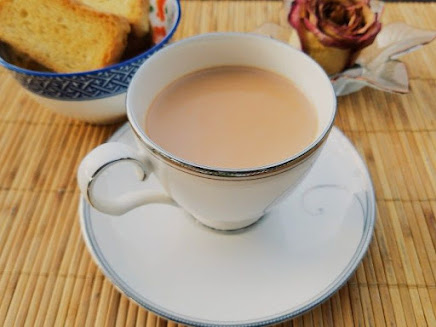Pakistani Chai (Tea)
Luqman Ismail Blog
## A Sip of Tradition: Exploring the Charm of Pakistani Chai
In the heart of South Asia, Pakistan, a nation rich in culture and traditions, there is a beverage that transcends mere refreshment and becomes a symbol of hospitality, comfort, and community. This beverage is chai, or tea, a ubiquitous part of daily life in Pakistan. Whether it's a morning ritual, a break at work, or a late-night gathering with friends, chai is an integral part of the Pakistani lifestyle. Let's delve into the world of Pakistani chai, its variations, and the cultural significance it holds.
### The Essence of Pakistani Chai
At its core, Pakistani chai is a blend of strong black tea, milk, sugar, and a variety of spices, brewed to perfection. The tea leaves, often imported from the lush plantations of Kenya or India, form the robust base of this beloved beverage. The preparation of chai is an art, with each household and street vendor adding their unique twist to the recipe.
### Types of Pakistani Chai
1. **Doodh Patti**: This is the most common type of chai, known for its simplicity and rich taste. 'Doodh' means milk, and 'patti' means tea leaves. In doodh patti, tea leaves are boiled directly in milk and water, resulting in a creamy and strong tea. It is usually sweetened generously and enjoyed in small, strong doses.
2. **Karak Chai**: The word 'karak' means strong, and this chai lives up to its name. Prepared by brewing tea leaves with water until it reaches a dark, strong consistency, milk and sugar are added later. Karak chai is popular in roadside tea stalls, providing a robust caffeine kick.
3. **Masala Chai**: A spiced version of chai, masala chai includes a blend of aromatic spices such as cardamom, cinnamon, cloves, ginger, and black pepper. Each spice adds its own depth of flavor, making this tea a fragrant and warming drink, especially enjoyed during the colder months.
4. **Kashmiri Chai**: Also known as noon chai or pink tea, this variety hails from the northern region of Kashmir. It is made with green tea leaves, baking soda, and milk, resulting in a beautiful pink color. Often garnished with crushed nuts, this mildly salty and creamy tea is a festive favorite, particularly during weddings and special occasions.
### The Cultural Significance
Chai in Pakistan is more than just a drink; it is a cultural phenomenon. Serving chai to guests is a common gesture of hospitality, signifying warmth and welcome. In homes across Pakistan, the sound of a whistling kettle or the sight of a steaming teapot brings a sense of comfort and familiarity.
Tea stalls, or 'chai dhabas', are social hubs where people from all walks of life gather to discuss everything from politics to cricket. These humble roadside eateries serve as melting pots of conversation and camaraderie. The tea stall culture is especially vibrant in urban centers like Karachi and Lahore, where the pace of life is fast, but a cup of chai provides a moment of pause and connection.
### The Ritual of Chai Making
Making chai is a ritualistic process, often involving multiple steps and considerable patience. Here's a basic recipe to give you a glimpse into the making of Pakistani chai:
#### Ingredients:
- 2 cups of water
- 2 teaspoons of black tea leaves
- 1 cup of milk
- 2-3 teaspoons of sugar (adjust to taste)
- Optional: A pinch of cardamom, a slice of ginger, or a cinnamon stick for added flavor
#### Instructions:
1. **Boil Water**: Start by bringing water to a boil in a saucepan.
2. **Add Tea Leaves**: Add the tea leaves and let them steep for a few minutes until the water turns a deep brown color.
3. **Add Milk**: Pour in the milk and bring the mixture back to a boil. Keep a close eye on it, as milk can boil over quickly.
4. **Add Sugar and Spices**: Stir in the sugar and any spices you're using. Let it simmer for a couple of minutes to infuse the flavors.
5. **Strain and Serve**: Strain the chai into cups using a fine mesh strainer and serve hot.
### Conclusion
Pakistani chai is more than just a beverage; it is a thread that weaves through the fabric of daily life, bringing people together and creating moments of joy and connection. Whether you are sipping a cup of doodh patti at home, enjoying a karak chai at a bustling dhaba, or celebrating with a fragrant cup of Kashmiri chai, each sip is a testament to the rich cultural heritage and the enduring charm of this beloved drink. So next time you find yourself in Pakistan, be sure to indulge in a cup of chai – it's a taste of tradition you won't want to miss.

.jpeg)

Comments
Post a Comment